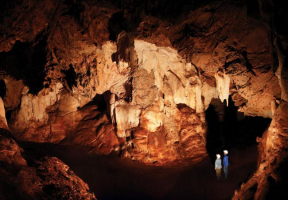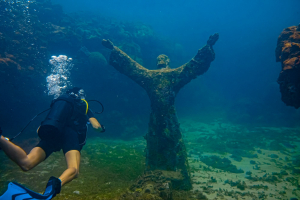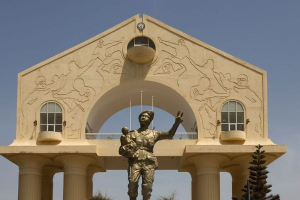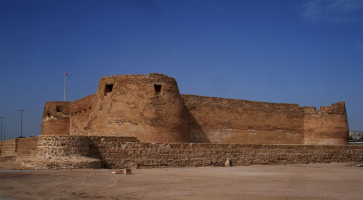Top 10 Historical Puzzles
If I knew then what I know now, goes an old proverb. Basically, it suggests that wisdom increases with age. Ironically, this is true of human nature but not of ... read more...history, which is much more a case of "if I knew then what I know now." Numerous mysteries and conundrums from history keep us scratching our heads today, things that our ancestors must have known. The fact that some of these problems are more challenging to solve than others doesn't mean that we are giving up on trying to understand the past.
-
Approximately 573 extinct languages are known to us at this time. Many of them have been lost to history and are neither studied nor spoken now. Few dead languages present a riddle as intriguing as Proto-Elamite does. It is the world's oldest language that hasn't been deciphered.
Proto-Elamite, which dates to the 4th millennium BC, is presently being researched at the Louvre in France. The language is written on more than 160 Iranian clay tablets, although it is still unclear what is being written there. The words are still being scanned in the hopes that by posting them all online, researchers from all around the world will be able to contribute and aid in deciphering their meaning.
Evidence implies that Proto-Elamite was extremely rare and may have only survived a few generations before dying out, in contrast to Elamite, a later and distantly related language that was widely spoken in the middle east for many generations. However, the nature of any texts inscribed in it as well as how and why that occurred are absolutely unknown. However, as the earliest language that hasn't been fully deciphered, it constitutes a significant development in the history of language.

Image by Artūras Kokorevas via pexels.com 
Image by Veranisio Filho via pexels.com -
The most well-known historical landmark in Peru is Machu Picchu, which is regarded as one of the Seven Wonders of the Modern World. It was constructed on top of a mountain more than 500 years ago without the use of mortar. All indications point to it being a significant Inca city. However, nobody is really certain what it was used for.
Regarding the purpose of the place, various theories are under contention. Some claim it was simply a city, as it first looks to be. Others believed it to be a royal resort. A temple or another holy site for pilgrims are suggested by other theories. Even an archaeologist once proposed that the Incas constructed it as a way to respect the soil. Of course, there is also the belief that it was created by extraterrestrials.
About 116 square kilometers of land are covered by the site. The Incas made sure you wouldn't lose track of it, whatever it was used for. It was constructed using tons of rock that was pieced together without the use of modern technology or even wheels, like other ancient marvels.
Because Machu Picchu was never referenced by the Incas in their chronicles, there is still a great deal of mystery surrounding it. The site's archaeological remains provide scant hints as to the city's function. The city was big enough to hold hundreds more people, therefore it's puzzling that there aren't more dead around. About 200 skeletons were discovered on the scene.
In an effort to eventually clarify the objective, researchers are still looking into the location and its surroundings.
Image by Chelsea Cook via pexels.com 
Image by Amanda Kerr via pexels.com -
In religious circles, few topics have generated greater discussion over the past few hundred years than the precise description of Jesus' appearance. He has long been portrayed as a white man with a beard in most of the Western world. Historians and religious experts who are quick to point out that Jesus was not from a region of the world where Caucasians were highly common have disputed this numerous times.
The question has been addressed by numerous individuals and organizations. Based on the Shroud of Turin, Italian police employed forensic technology to assess what Jesus would have looked like. Others have deduced that he would have had skin of a darker tone using hints from the Bible. Richard Neave created a composite face to represent what a guy would have looked like at that era in the region of the world where Jesus originated. While he never said it was Jesus, it may have been representative of how someone who looked like him would have appeared.
This contrasts significantly with artwork that has historically shown Jesus as a pallid guy with blue eyes. Of course, there is no actual way to know what the man looked like, so there will likely always be speculation.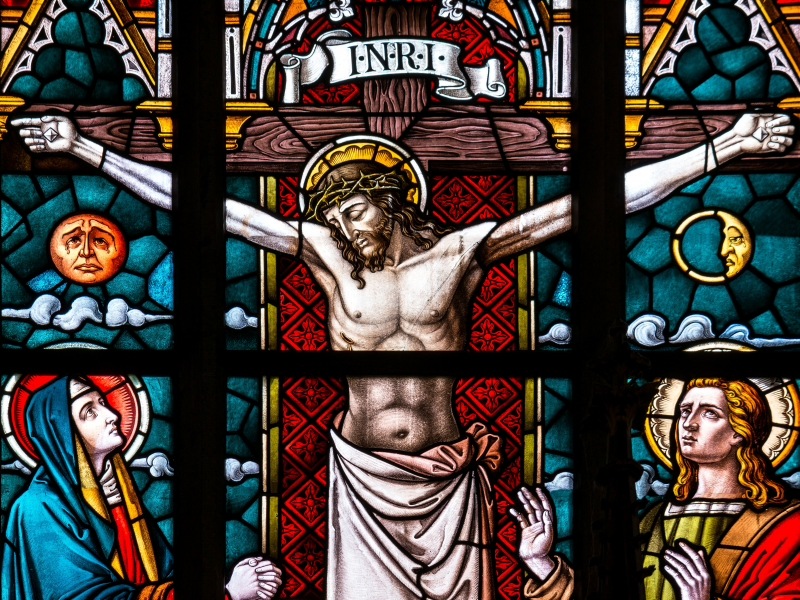
Image by Pixabay via pexels.com 
Image by Pixabay via pexels.com -
Just before Christmas in 1900, Flannan Isles had three lighthouse keepers. Then there were none. The men disappeared without a trace and were never heard from again. Additionally, there was zero proof of anything that might have occurred. Nothing suggested a solution, whether they had quit their jobs, drowned, or were murdered.
People are still looking for answers to the mystery of what happened more than 100 years later. One explanation for the incident is that nature triumphed over the men. Two of the lighthouse keepers received citations for storing equipment inappropriately. To make sure everything was safe, they might have left in a storm. The males might have been carried away by a wave that struck.
Of course, that is only a theory, though it is conceivable. The issue is that it will always be a theory because there are no corpses. There have been rumors that the scene had a toppled chair and a half-eaten lunch, which may have been a sign of foul play. However, those rumors started to spread a few years later.

Image by ensaio da cegueira via pexels.com 
Image by Ray Bilcliff via pexels.com -
In 2016, the FBI formally concluded its inquiry into DB Cooper's disappearance. That was 45 years after he stole $200,000 and fled with a jet. Cooper jumped out of the plane carrying the cash and was never heard from again.
DB Cooper was a pseudonym. Nobody is entirely sure who the individual was or what happened to his money, which is now worth more than $1 million. The narrative has been the subject of books and films. Various claims claimed he was either alive or dead. Since a youngster discovered $5,800 of it in the Columbia River in 1980, some people believe that the money is still out there in the wild.
New evidence and clues in the case have been found up till 2020. Of course, they weren't huge ones, but the destiny of the enigmatic and bold burglar still intrigues people.

Image by Tom Verdoot via pexels.com 
Image by Kaique Rocha via pexels.com -
Six individuals were murdered in 1922 on a rural farm in Bavaria, some 40 miles from Munich. When neighbors were worried that one of the children had not been attending school and the entire family had skipped church, they searched the area and found Viktoria Gabriel, her elderly parents, her two children, and the maid.
The barn contained the four oldest family members. Their deaths had been caused by a mattock, a weapon resembling a pickax. Along with the maid, the youngest child's body was discovered inside the home. Her first day on the job had been that day. When the previous maid left, she was said to have believed the farm to be haunted after hearing noises in the attic.
Later evidence suggested that the perpetrator had resided in the home, maybe spending some time hiding in the attic. Evidence may have been lost because so many individuals had visited the location between the time the deaths were discovered and the start of the investigation. The bodies weren't found until at least four days after the killings.
Each victim had not only been murdered, but also severely abused. Some of them were repeatedly bashed by the murderer. The daughter didn't pass away right away and probably lived for hours despite her wounds. Unbelievably, the farm animals and the family dog weren't just left alone—someone even looked after them for a few days.
There was still a significant amount of money in the house, and nothing was taken. Despite numerous suspects being detained over the years, no one has ever been convicted of the crime. The matter was still being looked into as recently as 2007, however there wasn't any fresh information.
Image by Faruk Tokluoğlu via pexels.com 
Image by NEOSiAM 2021 via pexels.com -
Since 1948, the Tamam Shud case has perplexed would-be criminal investigators with a mystery worthy of a high-budget film. On an Australian beach, a man was found. He had his feet crossed and was standing against a wall while wearing a suit. He had let go of a half-smoked cigarette. His demise. He was never given a name, either.
He may have died of heart failure, with possible poisoning as the cause, according to an early examination. In the autopsy, an enlarged liver and spleen were found. He had blood and a pastry in his gut. All of the evidence pointed to poison, but tests turned up nothing. The man had unusually pointed feet, as well as remarkably well-developed calf muscles. He might have made it a habit to wander around in high-heeled shoes, it was thought. Or he performed ballet.
The man was missing his ID. Nothing more than a ticket to the beach where he was discovered, some gum, and a pack of cigarettes. They tracked him down to a bag at a train station, but it contained no proof of his identification. A little pocket was discovered, however, in his pant waist four months after he passed away during a further check. There was a scrap of paper in the pack with the words "tamam shud" written in elegant type. Iranian for "completed." Nothing further.
The phrases came from a poetry book. The precise book was even located by law enforcement. The book's paper had indentations that turned out to be from coded writing. Perhaps the deceased was sending a final message. However, it has never been decrypted, and the man's identity has never been discovered. To ultimately identify the man, investigators have been working on DNA analysis of hair for more than 50 years.
Image by Stanislav Kondratiev via pexels.com 
Image by Liza Summer via pexels.com -
You might be able to decipher the Shugborough Inscription if the letters O U O S V A V V have any significance to you. A monument in Staffordshire, England bears the letters. On the grounds of Shugborough Hall, a popular tourist destination with considerable historical significance, there is a little monument in a cute little garden.
Years after the monument was constructed, the inscription was added to it. It is inscribed below a replica of a painting known as the Shepherds of Arcadia and is surrounded by the letters D and M.
Some people think the inscription's positioning and the information about the painter's life that was included with the original piece and underneath which the inscription appears indicate the Knights Templar, meaning that some individuals think this inscription might help them find the Holy Grail.
Despite how brief the inscription is, many code breakers have attempted to decipher it throughout the years without success. The entire connection to the Holy Grail is based on the 1982 book "The Holy Blood and the Holy Grail," which connects the artist Nicholas Poussin with Jesus. According to the theory, Jesus and Mary Magdalene had children and his family eventually evolved into the French Merovingian Dynasty. It is entirely devoid of supporting evidence.Many individuals have looked for the connection between the cryptic text, the Knights Templar, and the grail despite the fact that this notion is wholly fictitious. Despite the fact that there is no evidence linking this to the grail, the significance of the inscription itself, if it has one, remains a mystery.

Image by Diana Agapova via pexels.com 
Image by Ryutaro Tsukata via pexels.com -
The notion of a map to hidden riches is among the most alluring in human history. How wonderful it would be to discover the key to buried riches that were available for the taking. That is the allure of the Beale Ciphers, a collection of three cryptic manuscripts that claim to contain the key to a gold and silver treasure trove worth millions.
One of the three sentences has been deciphered, while the other two remain a mystery. The location of the treasure is described in the first unanswered text. The third describes who the treasure's owners are in full detail. However, the only text that has been solved describes the prize's characteristics, which is how everyone is aware that the treasure even exists.
The legend claims that in the 1820s, a man by the name of Thomas Beale buried some valuables in Virginia. He handed the innkeeper the encrypted messages before disappearing and going completely unreported. It is said that the innkeeper maintained the sealed box of ciphers for many years before deciding to open it and examine what was within. He handed them to a friend before he passed away.
In the 1880s, this friend released all the writings in a pamphlet after failing to crack the code himself. That made the enigma accessible to everyone with the knowledge to solve it. You can find the ciphers online, and if you can crack them and the treasure is real, you might make around $60 million in the form of several thousand pounds of gold and silver as well as more than $1 million worth of gems.
Just be aware that many people, including those who sought the assistance of psychics to complete the task, have attempted and failed throughout the past century. You can find the ciphers online, and if you can crack them and the treasure is real, you might make around $60 million in the form of several thousand pounds of gold and silver as well as more than $1 million worth of gems. Just be aware that many people, including those who sought the assistance of psychics to complete the task, have attempted and failed throughout the past century.
Image by cottonbro studio via pexels.com 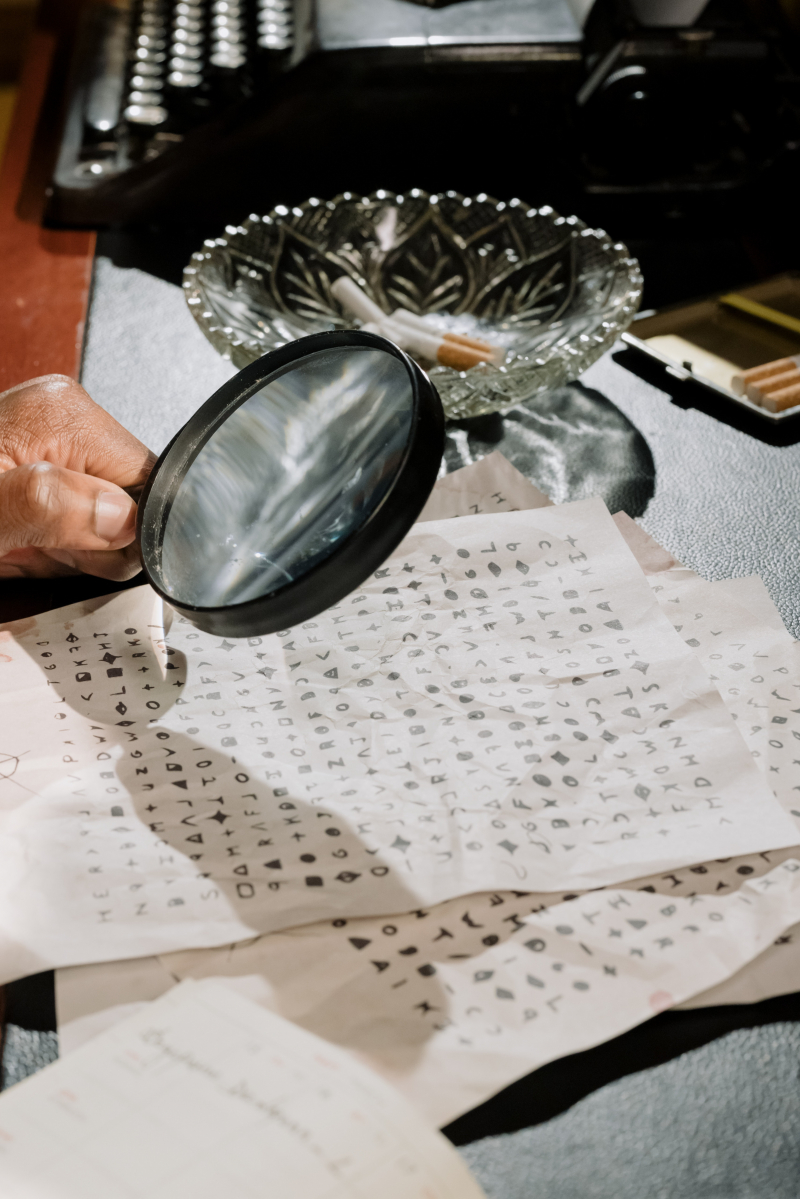
Image by cottonbro studio via pexels.com -
The Voynich Manuscript is a manuscript that dates to the first half of the fourteenth century. Although the language utilized is entirely unknowable, it appears to be a code. And because it's a code, it might be possible to translate and interpret it.
A book trader bought the book in 1912, and the process of interpreting the manuscript got under way right away. Over a century later, the project is still going strong but making little real progress.
It was claimed in 2017 that the riddle had been cleared up, the text had been translated, and all was OK again.
That is, until a second person reviewed the project and found that the newly decrypted text made absolutely no sense. Making ensuring the message being translated has significance is one of the keys to breaking any codes. If not, you didn't truly decipher that code.
The text is more than just coded words; it has been an intriguing mystery for all this time. There were also pictures of naked ladies, strange creatures, and signs of the zodiac. It has been attempted to be cracked by code breakers from both world wars, but to no effect. In truth, dozens, if not hundreds, of attempts have been made over the years, but no accurate or widely accepted translation has been made.
Image by Ron Lach via pexels.com 
Image by Ron Lach via pexels.com


















